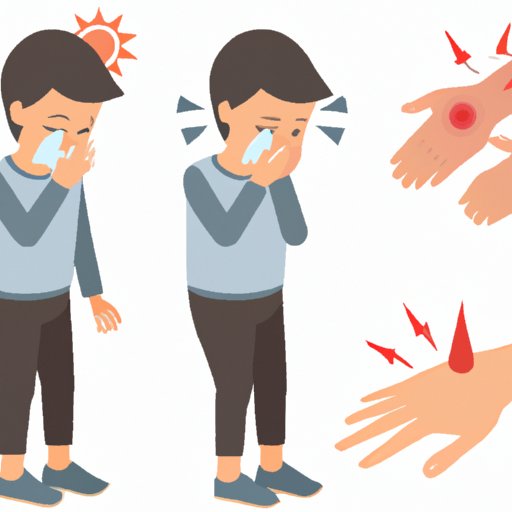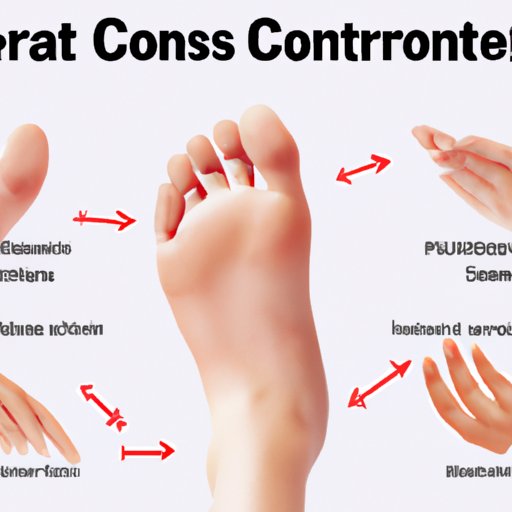
Introduction:
Hand Foot and Mouth Disease is a common viral infection that affects children under the age of five, but it is possible for adults and older children to contract this illness as well. This disease can cause mild to severe symptoms, depending on the individual’s immune system response to the virus. In this article, we will discuss the various ways of contracting this disease, along with its symptoms, prevention methods, and treatment modalities.

Ways to Contract Hand Foot and Mouth Disease:
Hand Foot and Mouth Disease is primarily caused by the Coxsackievirus A16, although other strains of the virus have been identified. A person can contract this virus through direct contact with an infected person or by touching contaminated objects that an infected person has touched.
A. Through Direct Contact:
The virus can be transmitted through direct contact with an infected person’s saliva, nasal secretions, blister fluid, or feces. A person can become infected by hugging, kissing, or sharing food or utensils with an infected person. Infected children who put their hands in their mouths or touch their faces after coughing or sneezing are at the highest risk of spreading the disease to others.
B. Through Contaminated Objects:
Hand Foot and Mouth Disease can be contracted by touching contaminated objects, such as toys, doorknobs, tables, or chairs. The virus can survive on these surfaces for several hours or even days, making it easy for an uninfected person to contract the virus unknowingly.
Understanding the Transmission of Hand Foot and Mouth Disease:
A. Routes of Transmission:
Hand Foot and Mouth Disease is highly contagious, and the virus can be spread through various routes, including:
- Direct contact with infected person’s saliva, nasal secretions, blister fluid, or feces
- Touching contaminated objects or surfaces
- Breathing in airborne droplets when an infected person coughs or sneezes
B. How Long It Can Survive on Surfaces:
The virus can survive on surfaces for several hours or even days, depending on the conditions. Cold and wet environments can help the virus survive for longer periods, while hot and dry environments can cause the virus to die quickly. This is why maintaining good hygiene practices and regularly cleaning common areas is so important in preventing the spread of the disease.
Symptoms of Hand Foot and Mouth Disease:
A. Early Symptoms:
The early symptoms of Hand Foot and Mouth Disease usually occur within three to five days after exposure to the virus and can include:
- Fever
- Sore throat
- Poor appetite
- Malaise (general feeling of being unwell)
B. Symptoms in Children:
Children with Hand Foot and Mouth Disease may develop the following symptoms:
- Skin rash of small red spots that turn into blisters and ulcers in the mouth, on the palms of the hands, and on the soles of the feet
- Irritability, fussiness, and poor sleep
- Loss of appetite and refusal to eat or drink
- Drooling or excessive saliva production
- Diarrhea
C. Symptoms in Adults:
Adults with Hand Foot and Mouth Disease typically have milder symptoms than children, and their symptoms may include:
- Fever
- Sore throat
- Small blister-like bumps on the hands, feet, or buttocks
- Loss of appetite
- Malaise (a general feeling of being unwell)
Prevention of Hand Foot and Mouth Disease:
A. Tips for Staying Safe:
The following tips can help prevent the spread of Hand Foot and Mouth Disease:
- Washing hands with soap and water regularly, especially after using the toilet or changing diapers
- Covering the mouth and nose when coughing or sneezing with a tissue or the elbow
- Avoiding close contact with infected individuals
- Disinfecting commonly used surfaces, such as toys and tables
B. How to Avoid Spreading the Virus:
If a person contracts Hand Foot and Mouth Disease, it is essential to do the following to help prevent the spread of the virus:
- Stay home and avoid contact with others for at least seven days or until the fever subsides
- Disinfect commonly used surfaces regularly
- Wash hands frequently with soap and water
- Do not share food, drinks, or utensils with others
C. Importance of Hand and Personal Hygiene:
Good hand and personal hygiene practices are vital in preventing the spread of Hand Foot and Mouth Disease. Frequent hand washing, especially after using the toilet or changing diapers, can help reduce the risk of infection.
Treating Hand Foot and Mouth Disease:
A. Home Remedies:
Hand Foot and Mouth Disease is a viral infection, and there is no specific cure for the disease. However, home remedies can help alleviate the symptoms and reduce discomfort. Some home remedies include:
- Drinking plenty of fluids
- Eating soft, cool, and nutrient-rich foods, such as yogurt or pudding
- Using over-the-counter pain relief medication, such as acetaminophen or ibuprofen, to reduce fever and discomfort
- Applying cool or lukewarm compresses to the skin rash to relieve itching and burning
B. Medical Treatment:
Medical treatment for Hand Foot and Mouth Disease usually involves managing the symptoms and preventing complications. Doctors may prescribe antiviral medications to help shorten the duration of the illness. They may also recommend taking pain relief medication to help reduce fever and discomfort.
C. Importance of Seeking Medical Attention:
If you or your child has Hand Foot Mouth Disease, you should seek medical attention if symptoms are severe, such as if you have a high fever, dehydration, or difficulty swallowing. Medical attention can potentially reduce the risk of serious complications, such as meningitis or encephalitis.
Hand Foot and Mouth Disease in Adults:
A. Understanding the Risks:
Although Hand Foot and Mouth Disease is more common in children, adults can contract the virus as well. Adults with weakened immune systems are at a higher risk of developing the disease. They include people with chronic diseases, pregnant women, and the elderly.
B. Precautions to Take:
Adults should take the same precautions as children to avoid Hand Foot and Mouth Disease. This includes washing hands regularly, avoiding close contact with infected individuals, and disinfecting commonly used surfaces.
C. Prevention Tips for Adults:
Adults can reduce the risk of infection by following these tips:
- Maintain good hand and personal hygiene
- Avoid close contact with individuals who have the virus
- Clean commonly used surfaces regularly
- Avoid sharing food, drinks, or utensils with others
Conclusion:
Hand Foot and Mouth Disease is a contagious viral infection that can cause mild to severe symptoms in both children and adults. Understanding the ways of contracting the virus, its transmission, symptoms, and treatment modalities can help reduce the risk of infection. Practicing good hygiene habits, such as regular hand washing and disinfection of common surfaces, can also help prevent the spread of the disease.
Final Thoughts and Advice:
Hand Foot and Mouth Disease is a common illness that should not be taken lightly. While most cases are mild and self-limiting, severe complications can occur. It is essential to seek medical attention if symptoms are severe or if there is concern about potential complications. Practicing good hand and personal hygiene is the key to preventing the spread of the virus and reducing the risk of infection.




